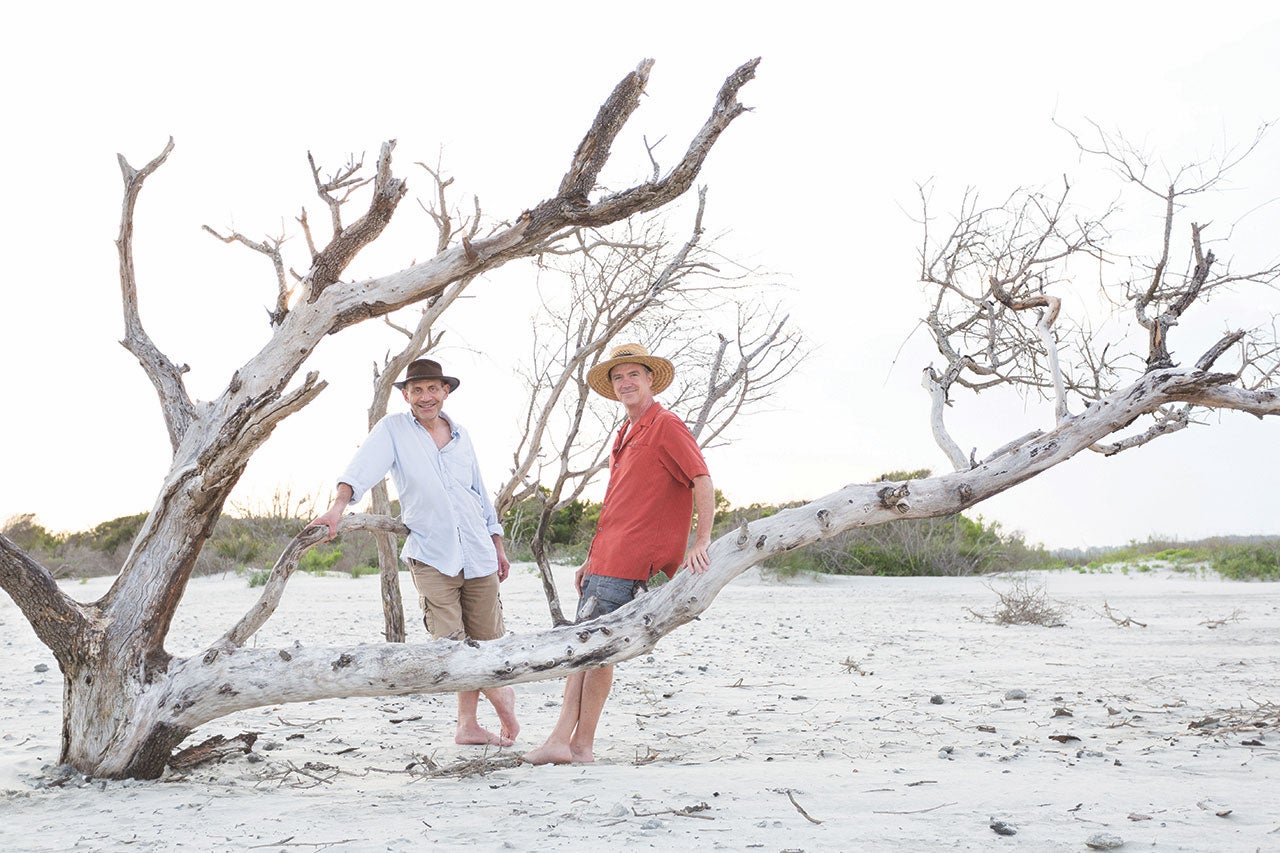In a world that’s increasingly, and perhaps now eternally, interconnected, professors Rich Bodek (left) and Joe Kelly (right) have convinced their students to spend a semester focusing on what it means to be isolated and alone.
For the third time, the history and English professors have combined their talents to teach an interdisciplinary course on the subject of marronage – when individuals or small groups of people are separated from civilization and society, whether by choice or not.
Historically speaking, maroons are runaway slaves. But the term is often applied more broadly to all types of castaways. In Bodek and Kelly’s class there is an examination of marooned sailors (Robinson Crusoe and The Island of Dr. Moreau), marooned children (Lord of the Flies) and marooned survivors of a nuclear holocaust (Lilith’s Brood) and zombie plague (The Walking Dead), as well as an exploration of the art of escaped black slaves. Despite the assorted plots and people presented in these works, Bodek and Kelly ask students to analyze what’s consistent between all the books and graphic novels, such as themes concerning the fragility of civilization and humanity. Furthermore, works concerning marronage inevitably dwell on the relationship between man and nature and what constitutes the self.
“When you’re stripped down and laid bare, staring at the jungle on one side, the ocean on the other, you come face to face with the issue of what it means to be human,” says Kelly.
The removal of the familiar can indeed have a profound impact, agrees his teaching colleague.
“How can you not rethink who you are and who you want to be,” says Bodek. “I don’t think there’s any way to avoid it.”
When you talk with Bodek and Kelly, you discover there’s much nuance concerning marooned people. Should a shipwreck survivor be considered a maroon just as an escaped slave, since the former’s removal from society was accidental and the latter’s escape deliberate? Are immigrants maroons, since they are transplanted from one culture to another and left to confront a new society and possibly reinvent themselves? How about two College professors left alone with two dozen undergrads twice a week, forced to attempt to bridge the generational chasm between them? Are they hopelessly marooned?
Bodek and Kelly acknowledge there’s room for debate. Indeed, such debate was held at the College in February when anthropologists Richard and Sally Price visited the Carolina Lowcountry and Atlantic World Program for a conference entitled: “Marronage and Maroonage in Culture, History, and Society.”
No matter how loose or narrow one’s definition of marronage might be, stories of abandonment, isolation and survival make for good discussion. For rising junior Sophie Naughton, stories of marronage are very relevant to today’s world, no matter how drastically methods of travel and communication have changed over the past couple centuries.
“One of the things we’ve been exploring in this class is the expansion of the marronage tale beyond the boundaries of just being shipwrecked,” says Naughton. “So far we’ve talked about people like Robinson Crusoe, marooned on an island, but also people marooned on foreign planets and even in another time. We may not be shipwrecked very often anymore, but we keep finding new boundaries to explore anyway.”
Despite the wide net cast by Bodek and Kelly in the realm of marronage, there’s one seemingly obvious piece of maroon-themed work that they promise won’t reappear on a syllabus for the class: Gilligan’s Island. Bodek and Kelly once assigned a couple of episodes from the ’60s television show, but found the content “too lightweight and superficial,” says Bodek.
“It was a disaster,” Bodek says of the skipper, Gilligan, professor and the other castaways. “There’s nothing to talk about.”
Not that Bodek and Kelly reflexively react to television this way. Last semester, as part of a final exam, the professors had students analyze four episodes of Lost – another television show featuring strangers stranded on an island, struggling to survive.
As Kelly says of marronage: “This trope is everywhere in American culture.”
Photo by Kate Thornton ’00





